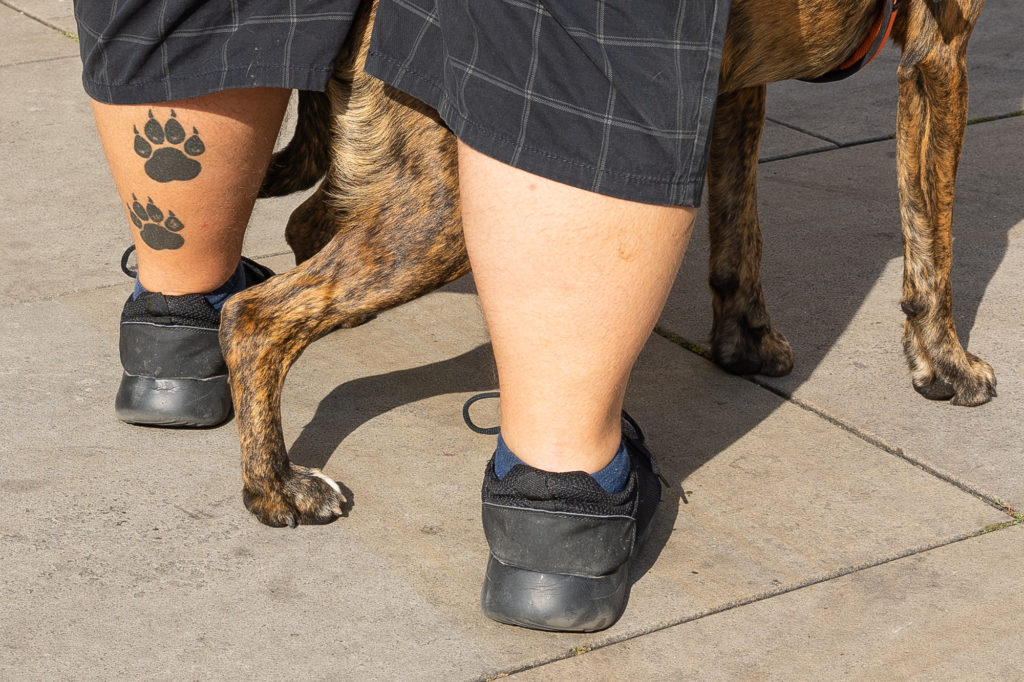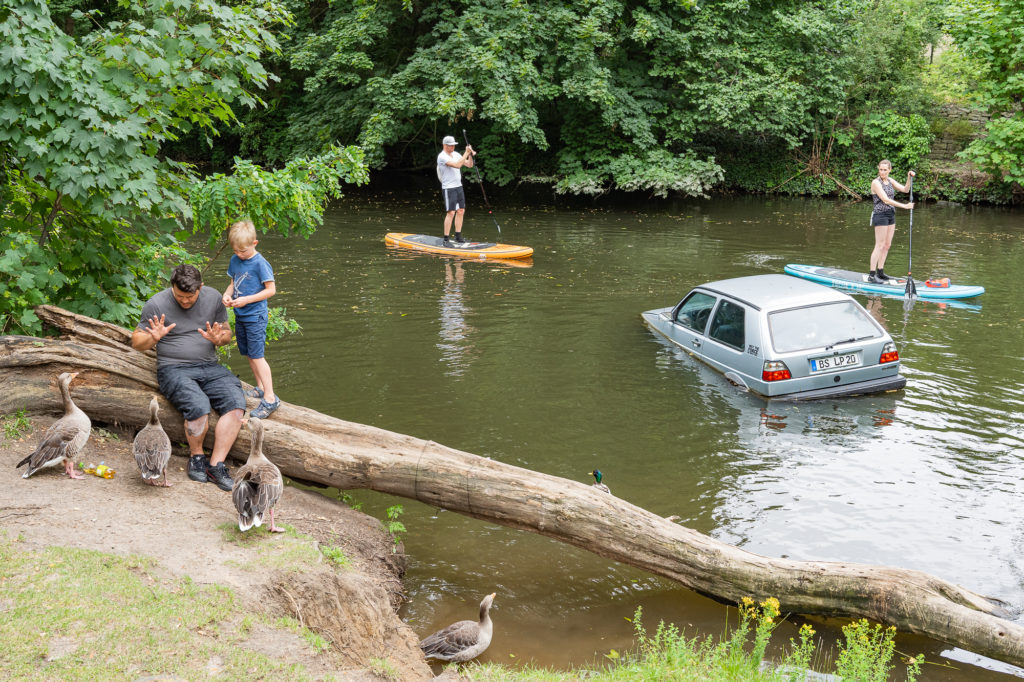
“Searching for my very own Rue Mouffetard“
WHO?
I was born in 1963, in the German city of Braunschweig. Some of you readers might be familiar with this city as the home of the once famous German camera brands of ROLLEI and VOIGTLÄNDER. I’m married, father to a daughter and a son, in the language business by profession and design, in street photography with my heart. Originally, I wanted to make photography my profession after school, something that just didn’t materialize for different reasons. And maybe that’s a good thing. This way my passion could stay my effortless passion and didn’t have to pay any bills. It was able to stay a matter of the heart rather than a business venture.
I got my first serious camera as a present from my parents for my 18th birthday and bought myself a photo compendium entitled “THE JOY OF PHOTOGRAPHY”, which was published by Kodak, if my memory serves me correctly. I poured over the pages and there it was – I can still feel my amazement when I first discovered this photograph; it’s as if it were yesterday: the magical B/W masterpiece by Henri Cartier-Bresson, a photograph that many of you are sure to be familiar with. The black-and-white picture of a small boy, carrying home two huge bottles of wine with an indescribable expression of pride and joy on his face, entitled Rue Mouffetard, Paris, 1954. When I saw this picture, I was thunderstruck: How on earth could a photographer be there, see and catch such an intimate, candid moment? What he called The Decisive Moment. With the equipment available at that time! This was THE picture for me, my personal game changer, that was what I wanted to do, too! Take pictures of people in the street! If I had only known how hard this journey was going to be to make one single good picture, I might have stuck with a different genre, but there was no way out: This was going to be what I wanted to do.
So, there was this little B/W wine bottle boy; if you google “Cartier Bresson”+”boy with wine bottles”, you’ll find him immediately. I wonder what has become of that little Frenchman.
And then there was Thomas Hoepker, my secret teacher of how to see the world. As a teenager, I had a subscription to the German GEO magazine, which featured, among other things, the pictures taken by the fabulous German photojournalist Thomas Hoepker at regular intervals. These pictures also had a major impact on me. Although they were published in a documentary and journalistic context, they showed life on the streets of the world – street photography in the truest sense of the word – whether in East Germany, the German Democratic Republic at that time, New York, or Beijing. I saw one of his exhibitions in Munich in the mid-1980s entitled Ansichten (a pun in German, meaning “views” and “opinions”), and these were pictures that burned themselves into my brain. I have never forgotten them since; they have provided me with a kind of internally memorized guardrail and a compass to give direction to my own photographic passion. Today, I own one of his prints and some of his books, all signed; they mean a great deal to me.
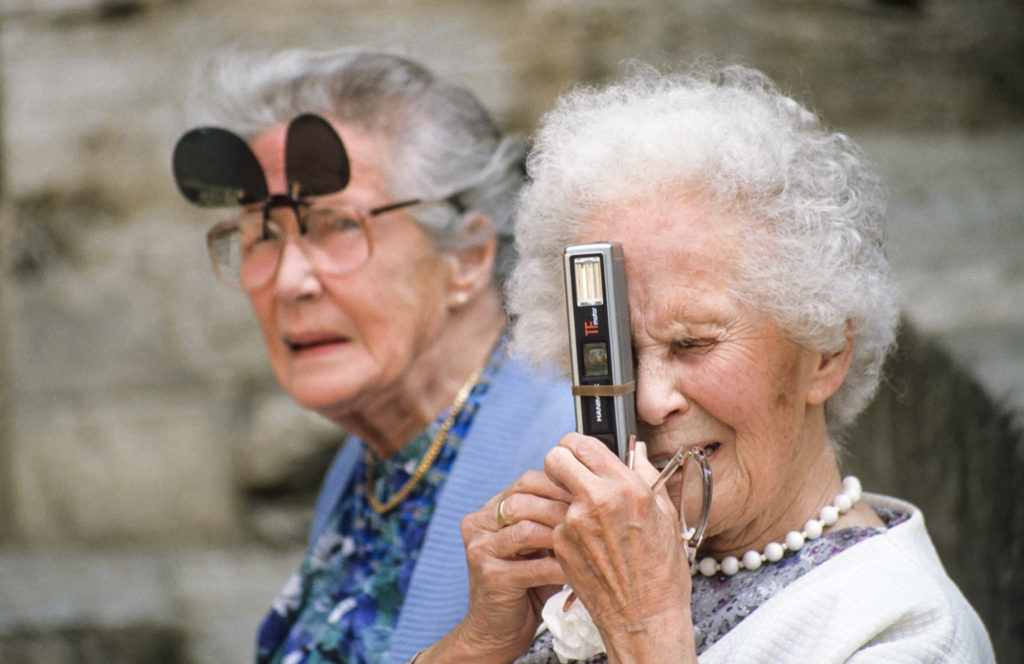
WHAT?
Being a self-taught photographer, I started with all the basic stuff, all those analog films, all from Ilford, all B/W; color was far too expensive and complicated for me. I learned how to develop the negatives and make my own prints in my parents’ basement. I experienced digital as a blessing, it made everything so much easier, at least for me. I am not a big fan of tech talk, in fact not at all. All you really need is a good camera with a big sensor and a good lens in front of it, but gear is not really all that important.
What is important, though, is the eye, the art of perception and openness to all kind of visual clues. Which is easier said than done….
What do I like best about photography? 90% of my pictures have to have people in them, must have some kind of significance and meaning to me. For me, a good picture must have a thought-provoking note, some humorous or quirky details, some kind of storyline. I like pictures that pose questions rather than provide answers. All of my photos are taken candidly; nothing is staged or manipulated.
I see myself more as a classical “hunter”, rather than a photo “fisher”. The picture with the car in the river is somewhat of an exception. When I went to this place, I intended to put the car (a piece of art by Bjørn Melhus, a German-Norwegian media artist, on display at the time I took the picture) into a strange, bizarre-looking context by waiting long enough until an interesting story with different controversial day-to-day elements materialized. Bizarre and strange at least for everyone outside my home town, who wouldn’t know that the car was a piece of art.
I would characterize myself as a classical flaneur—though sometimes more of a long-distance-runner-with-a-camera. The camera almost always unobtrusively held in my hand, the strap wrapped around my wrist and more rarely over my shoulder or around my neck. This helps me to blend in with the crowd. Ready to take action in an instant, react to any kind of scene that strikes my fancy and unfolds right in front of my camera. And that’s what I love so much about this subject: you don’t need any clumsy gear, you don’t have to travel anywhere, you’re always there! That’s why it is so magical for me, and many have said this before: It’s positively an obsession! I try to stay as invisible as possible, try to see things that others might not see, find something special in the ordinary that might only exist for a split second and then it’s gone forever. Creating a document of life. The two old grannies I captured in 1991 in San Gimignano, Italy, one with the Hanimex 110 pocket camera: a time document today. As all the millions of smartphones today will be at some point in the future.
As Matt Stuart put it – and rightly so: Try to find All That Life Can Afford. The big theater of life is always open with no closing hours! This search for great pictures is something that gives me the greatest joy, to go out and try to make something out of nothing. If I recall correctly, I first read this latter quote on Gus Powell’s website, though I might be mistaken. Anyway, I feel this obsession, too.
What is more, I feel very drawn to social photography, photo journalism, documentary. I like taking pictures at demonstrations.
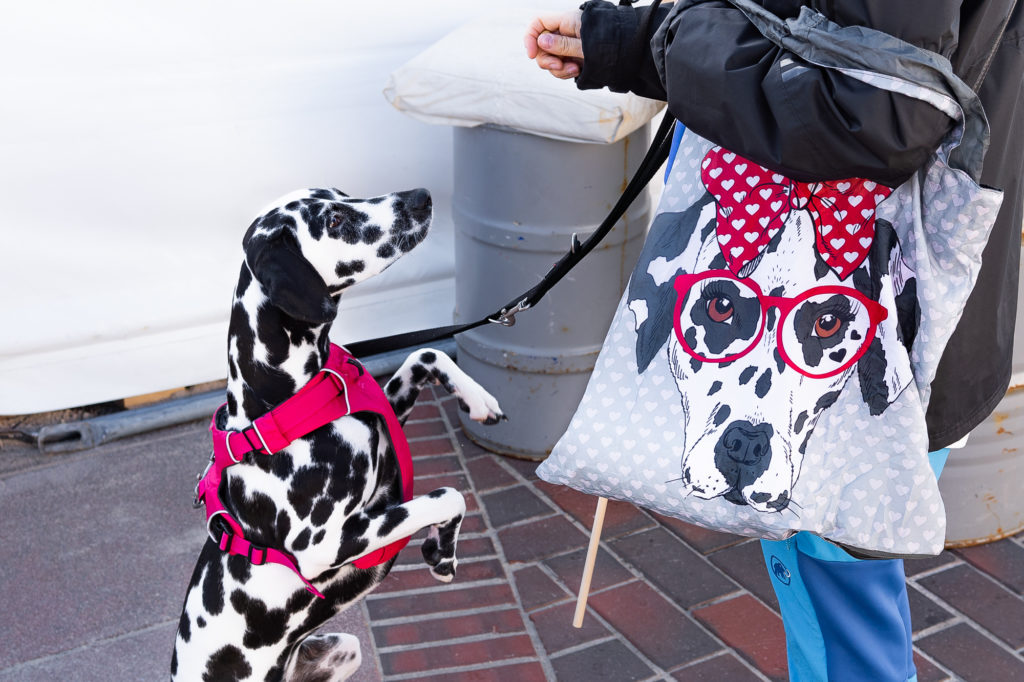
WHEN?
Whenever I have some free time and feel like I have an open mind that will be able to perceive any visual clues. Not every day, regrettably. But every week I’d say. But not nearly enough time today, since I am still quite busy in my job, which takes up far more than 9 to 5. I am really looking forward to the phase in my life, which will be in the not-too-distant future, when I have much more time to spend on the streets of my home town and in the big capitals of the world. I regularly visit larger events, trade shows, parades, carnival celebrations, all kinds of events where people come together. Here I try to keep an eye out for the not-too-obvious, the stories behind the scenes. I often find the best pictures while preparing for such events or afterwards .
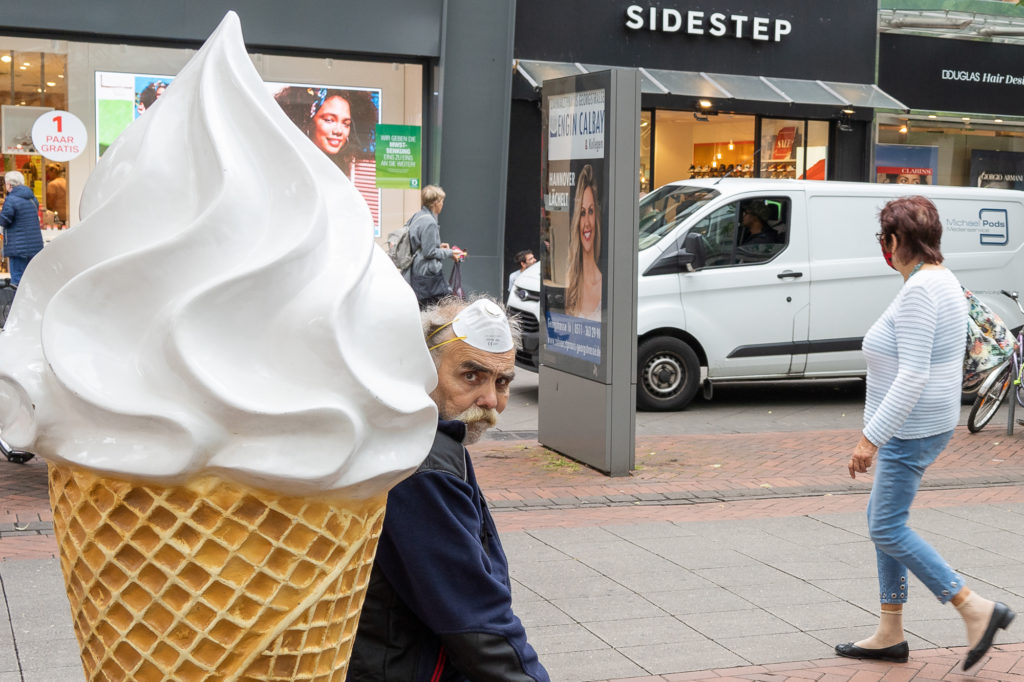
WHERE?
Anywhere where there is enough light to take a decent photo. Could be a village, could be a beach, could be New York. New York fascinates me. I’ve only been there once, but I’ll definitely go again. Otherwise, the best place to shoot is on your own home turf, in my case in my home town of Braunschweig, with a population of a good 250,000. You’re the expert and specialist in your own home town, you know the best places to go, with the best light at certain times of the day, you know where people meet, shop, etc. Germany is not so blessed with blue skies, great light and vibrant colors. Italy, France and Portugal have more of that. I have enjoyed taking photographs there.
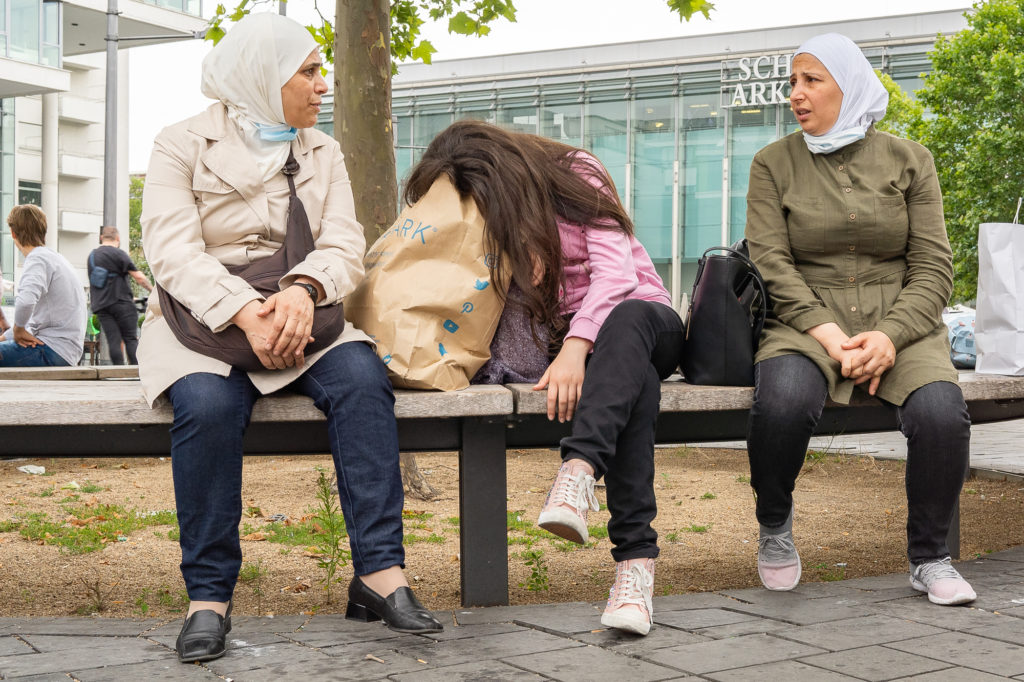
WHY?
Well, after all, it’s all about curiosity! It’s all about finding out what life has to offer me on any given day – I’m always eager to see what’s around the next corner.
I like people. When I don’t have my camera with me, I am not the biggest fan of large crowds, to be honest, they make me feel a bit uneasy. But this changes as soon as I have my camera with me. Crowds and moments of human interaction can’t be big enough.
Plus: photography has also taught me a lot about myself. What kind of person I am. I used to be more of a silent and introverted guy thirty years ago. Street photography, interaction with the world and the people around me has also helped me to grow as a person. Over the years, I have become more outgoing, communicative and open. In this way, photography has definitely taught me a lot about myself, so I have shaped my photography, but my photography has also shaped me.
I am also doing this because I want to grow as a photographer. Create more complex and more complexly layered photographs in the future. I’d love to see a picture or two of mine printed on paper and hung in an exhibition. I plan to put together a book of my own at some point. Still dreams today but: “Hey” – we all need dreams that keep us going. I love the haptics of quality paper and the smell of ink and freshly unpacked photo books – that’s reason enough for me to love this genre, I guess.
To wrap up: WHY?
Because that little French boy with the bottles and Mr. Hoepker are always in the back of my mind, shouting out “Do it, do it, do it!”.
Because the next street to the right or left could be my very own Rue Mouffetard in Paris.
